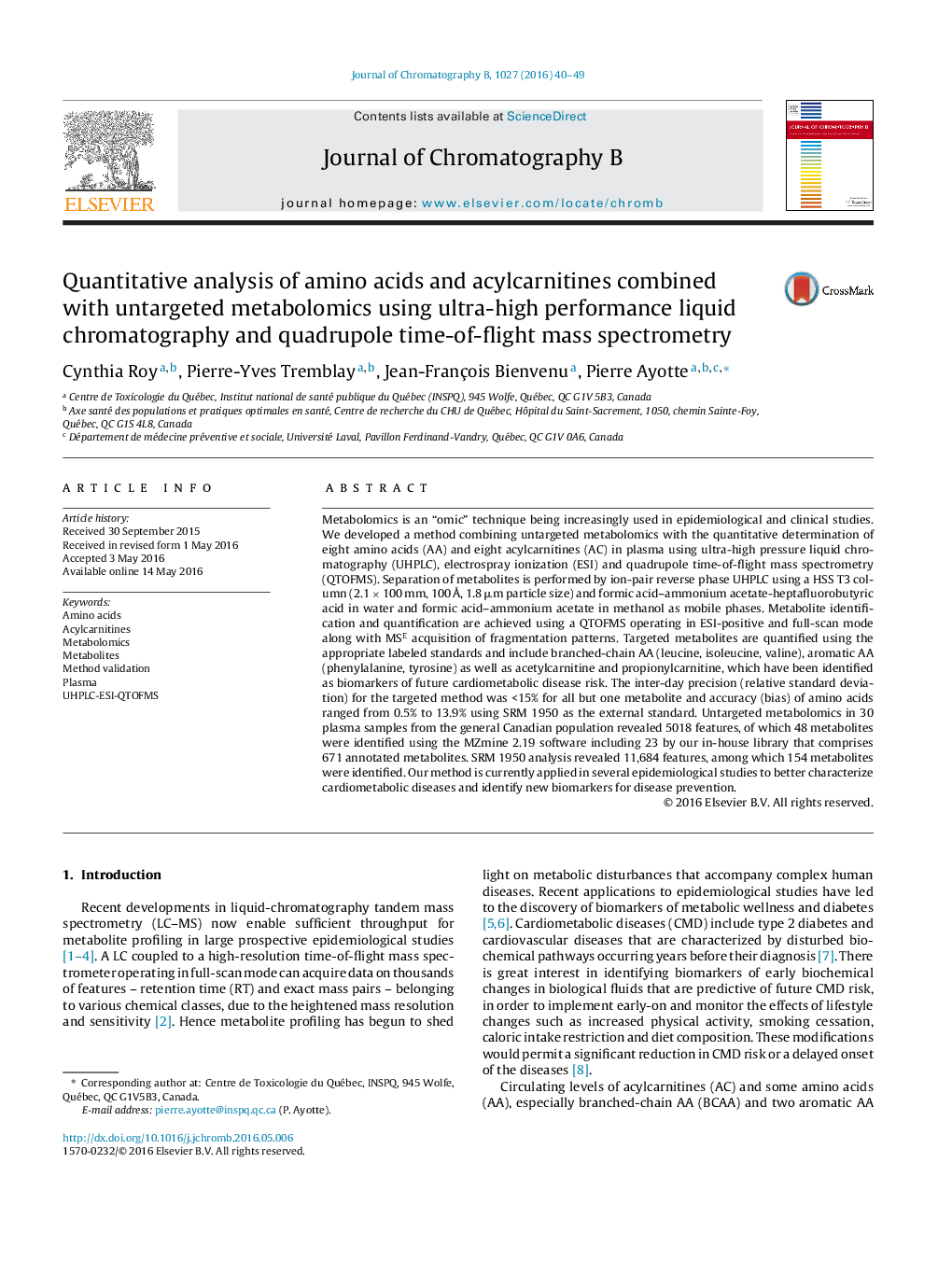| Article ID | Journal | Published Year | Pages | File Type |
|---|---|---|---|---|
| 1212684 | Journal of Chromatography B | 2016 | 10 Pages |
•We developed a hybrid targeted/untargeted metabolomic method using UHPLC-ESI-QTOF.•The method was fully validated for quantification for eight amino acids and eight acylcarnitines.•Trueness of the amino acids results were all <13.9%.•We normalized untargeted metabolomics data using isotope-labeled standards.
Metabolomics is an “omic” technique being increasingly used in epidemiological and clinical studies. We developed a method combining untargeted metabolomics with the quantitative determination of eight amino acids (AA) and eight acylcarnitines (AC) in plasma using ultra-high pressure liquid chromatography (UHPLC), electrospray ionization (ESI) and quadrupole time-of-flight mass spectrometry (QTOFMS). Separation of metabolites is performed by ion-pair reverse phase UHPLC using a HSS T3 column (2.1 × 100 mm, 100 Å, 1.8 μm particle size) and formic acid–ammonium acetate-heptafluorobutyric acid in water and formic acid–ammonium acetate in methanol as mobile phases. Metabolite identification and quantification are achieved using a QTOFMS operating in ESI-positive and full-scan mode along with MSE acquisition of fragmentation patterns. Targeted metabolites are quantified using the appropriate labeled standards and include branched-chain AA (leucine, isoleucine, valine), aromatic AA (phenylalanine, tyrosine) as well as acetylcarnitine and propionylcarnitine, which have been identified as biomarkers of future cardiometabolic disease risk. The inter-day precision (relative standard deviation) for the targeted method was <15% for all but one metabolite and accuracy (bias) of amino acids ranged from 0.5% to 13.9% using SRM 1950 as the external standard. Untargeted metabolomics in 30 plasma samples from the general Canadian population revealed 5018 features, of which 48 metabolites were identified using the MZmine 2.19 software including 23 by our in-house library that comprises 671 annotated metabolites. SRM 1950 analysis revealed 11,684 features, among which 154 metabolites were identified. Our method is currently applied in several epidemiological studies to better characterize cardiometabolic diseases and identify new biomarkers for disease prevention.
